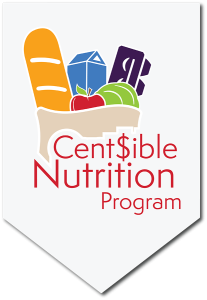Sweet, green, and crunchy, is there anything better than eating snap peas straight out of the garden? Nope!
Peas are easy to grow and they can handle a little frost, making them well suited for Wyoming gardens. Like many vegetables that do well in Wyoming, peas should be planted in the early spring because they do not like the hot weather. However, in some areas they can be planted between July 1-15 for fall harvest. Peas can be stored by freezing for later use- if you don’t eat them all first!
Planting
- Plant seeds 1-inch apart in rows 18 to 24 inches apart.
- Later, thin plants to 3 inches apart in the rows.
- Pea varieties vary in height from 18 inches to 6 feet tall. It may be helpful to grow taller varieties of peas next to something they can climb, like a trellis, wire fence, or chicken wire stretched between stakes.
- Water peas regularly, especially once the pods begin forming.
Harvesting
- Harvest when pods are still flat, before the seeds start to enlarge.
- Pick peas consistently to stretch out the harvest season.
Suggested Varieties:
- Edible-pod: Dwarf Gray Sugar, Little Sweetie, Oregon Sugar Pod II, Snowbird, Snak Hero
- Snap peas: Sugar Ann, Sugar Daddy, Sugar Snap, Super Snappy
- Garden: Early Alaska, Little Marvel, Maestro, Mr. Big
Happy gardening!
Information summarized from UW Extension publications by Katie Shockley, Writer/Editor, University of Wyoming Extension Communications & Technology.
Sweet, green, and crunchy, is there anything better than eating snap peas straight out of the garden? Nope!
Peas are easy to grow and they can handle a little frost, making them well suited for Wyoming gardens. Like many vegetables that do well in Wyoming, peas should be planted in the early spring because they do not like the hot weather. However, in some areas they can be planted between July 1-15 for fall harvest. Peas can be stored by freezing for later use- if you don’t eat them all first!
Planting
- Plant seeds 1-inch apart in rows 18 to 24 inches apart.
- Later, thin plants to 3 inches apart in the rows.
- Pea varieties vary in height from 18 inches to 6 feet tall. It may be helpful to grow taller varieties of peas next to something they can climb, like a trellis, wire fence, or chicken wire stretched between stakes.
- Water peas regularly, especially once the pods begin forming.
Harvesting
- Harvest when pods are still flat, before the seeds start to enlarge.
- Pick peas consistently to stretch out the harvest season.
Suggested Varieties:
- Edible-pod: Dwarf Gray Sugar, Little Sweetie, Oregon Sugar Pod II, Snowbird, Snak Hero
- Snap peas: Sugar Ann, Sugar Daddy, Sugar Snap, Super Snappy
- Garden: Early Alaska, Little Marvel, Maestro, Mr. Big
Happy gardening!
Information summarized from UW Extension publications by Katie Shockley, Writer/Editor, University of Wyoming Extension Communications & Technology.
Additional Resources
Learn more about growing peas with these resources from the University of Wyoming Extension:
- UWE Publication: Growing Vegetables in Wyoming
- Video: Growing Peas
Next up: Green Beans [Coming September 4]
This quick side dish or snack is crunchy, savory, and bursting with flavor. Use all snap peas or add some of your other favorite veggies for a splash of color on your plate.



